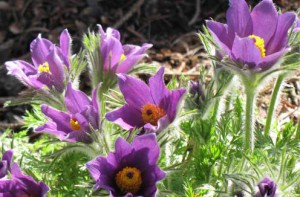
As the seasons change so does the general state of health for many of us. The further from the equator we live, the more pronounced these effects are. For instance, did you know that blood pressure elevation for many people increases with the distance they live from the equator, an effect most pronounced during the low sunlight season (winter in the northern hemisphere)?
A report published online in Nature Communications May 12, shows evidence of changes in cellular physiology with the seasons. Todd et al. published a study entitled: “Widespread seasonal gene expression reveals annual differences in human immunity and physiology”, where they note,
“Here we find more than 4,000 protein-coding mRNAs in white blood cells and adipose tissue to have seasonal expression profiles, with inverted patterns observed between Europe and Oceania.”
Let’s Take a Look at the Research
Todd et al. looked at ethnically and geographically distinct populations, including subjects from Australia, The Gambia (Africa), Germany, the UK and Iceland. Individuals from the various studies were infants, adults with type 1 diabetes and asthmatics in the range of 18-83 years of age. The authors analyzed RNA from peripheral blood mononuclear cells and subcutaneous adipose tissue biopsies, as well as examining peripheral blood cell counts and circulating levels of proinflammatory cytokines.
The Results
In the BABYDIET study (109 children from Germany with a total of 454 samples) they saw peaks in expression of ARNTL (anti-inflammatory circadian transcription factor) and vitamin D receptor (VDR) during summer months, with low expression during winter months. The difference in the summer high and winter low peaks was 1.5-fold for ARNTL. The housekeeping genes B2M and GAPDH showed no seasonal variation. The authors noted that the time of day during which blood was drawn did not explain the seasonal differences in expression.
These researchers looked at known components of the circadian clock and found seasonal expression in 9 of 16 genes tested, including: ARNTL, CLOCK, CRY1, CSNK1D, CSNK1E, NRID2, RORA, TIMELESS^30 and NFIL3. The authors noted that the glucocorticoid receptor NR3C1 expression correlated strongly to that of ARNTL. On the other hand, receptors for the prostaglandins and leukotrienes and eicosanoids were more highly expressed during winters in Germany. Receptors for adiponectin, estradiol and antidiuretic hormone were more highly expressed in the summer months. Other hormone receptors showed no seasonal expression variations.
Not All Genes Peak in Summer
The authors noted an interesting expression pattern in immune system genes examined for seasonality. They found that in a cohort of children (BABYDIET group) 5,136 genes out of 22,822 (23% of the genome) showed significant seasonal differences, with 2,311 of 5,136 genes showing increased expression from June through August, while the other 2,826 of 5,136 genes showed winter time up regulation (December through February).
When they analyzed gene expression data from adult asthmatics of diverse ethnic groups and worldwide locations, they again observed the seasonal gene expression seen in children. And in this geographically diverse group, increased seasonal gene expression seen during the Northern hemisphere summer was seen in samples from Australian individuals to be similarly elevated during the Southern hemisphere summer, December – February.
What About Blood Cell Types?
When blood counts from peripheral blood mononuclear cells were analyzed ( > 7,000 adults from the UK) several cell types showed seasonal variations, including eosinophils, which peaked during summer months, while basophils were at their low point in expression; neutrophils, which were in rapid decline in expression during the summer months; red blood cells, which peaked in expression June-July, while white blood cells showed a rapid decline in expression (as for neutrophils) June-July. The authors noted that the peak in leukocytes for individuals from The Gambia occurred during their rainy season, June through October, when infectious processes such as malaria are on the rise.
The authors commented that environmental changes such as seasonal shifts affect the types of and interactions between various organisms and related biological processes, which obviously can manifest as seasonal transcriptional signatures of the organisms.
It is interesting to consider what this seasonality might mean for an individual that lived part of the year in the Northern hemisphere and the other part in the Southern hemisphere.
It seems obvious that these changing gene expression patterns and in particular, changes in blood cell composition, affect the immune function of the individuals. Studies in mice show similar patterns, and suggest that Europeans in the Northern hemisphere have a more pro-inflammatory immune response during the winter.
In addition, it is known that total monocyte numbers in the blood are elevated in the winter, when ARNTL expression is the lowest. Acute phase proteins such as CRP (C-reactive protein) are induced by IL-6 release from monocytes, whose numbers are higher during winter. Cardiovascular disease, type 1 diabetes and rheumatoid arthritis all peak in incidence for Europeans during winter in the northern hemisphere.
The authors conclude that their data explains a potential cellular basis for recognized seasonality of human disease and supports the importance of considering seasonal change and its impact on human health.
Reference
Todd, J.A. et al. (2015) Widespread seasonal gene expression reveals annual differences in human immunity and physiology. Nat. Comm. doi:10.1038/ncomms8000
